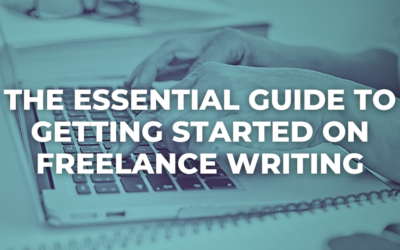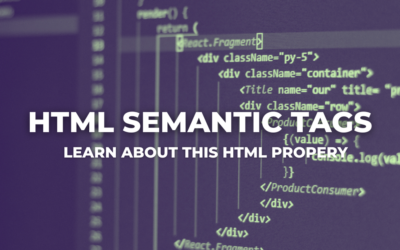 Once again we bring you one of our monthly interviews with design and web professionals, the goal is to provide some educational and informative insight into how people work, what inspires them and how they got where they are. This month we have Robert Hoekman, jr. founder of Miskeeto, speaker at many conferences, writer of many articles and books; namely Designing the Obvious and Designing the Moment.
Once again we bring you one of our monthly interviews with design and web professionals, the goal is to provide some educational and informative insight into how people work, what inspires them and how they got where they are. This month we have Robert Hoekman, jr. founder of Miskeeto, speaker at many conferences, writer of many articles and books; namely Designing the Obvious and Designing the Moment.
How or where do you find inspiration?
Whenever I work on a design, I question the way every detail is done – in existing designs and in my own. I question the number of steps it takes to complete a task, the words used for instructive text, labels, the relevance of features, and so on. I try to justify every last detail. In doing this, I very often find ways to improve each element and better support the way real people actually work with web sites and applications.
So, for me, inspiration comes from questioning things. When you really look at something – hard – you start seeing new things there and it sparks ideas. Inspiration can be found just about anywhere, but this is where it seems to come most reliably for me.
Who is the biggest influence on your work right now?
The answer to this question changes often because I don’t like to get too settled on one idea – I like to explore as many as I can. But having recently visited Taliesin West, one of Frank Lloyd Wright’s most famous creations, I’m finding myself thinking about how his work in architecture relates to web design quite a bit.
Wright developed the “compress and release†technique, for example, in which he used low ceilings in entryways so people entering a room are forced to move past the entryway and out into the open space of the room. He continually found ways to manipulate how people moved through a space to make sure they saw what he wanted them to see.
This is obviously analogous to web design, as most interactions need to be performed in a very particular way. So I’ve been thinking about new ways to guide people to do exactly what we want them to do so that these interactions get completed correctly and users can walk away feeling good about themselves.
Where are your “design roots� Print or Web?
Both, actually. I started designing static web sites and ended up doing quite a bit of print work along the way. Print work was actually critical to my understanding of color, dimension, proportion, symmetry, and so on.
Soon, though, I realized that my real obsession is with application behavior and I morphed into an interaction designer. I’ve spent most of my career designing interactive experiences.
How important is it to know the history of design?
Well, on one hand, knowing how things have evolved over the years and how past design decisions and ideas have contributed to the work you do now can be extremely illuminating and can contribute to the richness of your process and vision as a designer.
On the other hand, knowing too much can be restrictive. Knowing the history of design can lead you to believe that your goal is to find the next logical step, but often the goal is to find the next illogical step – something so far beyond the next logical step that it raises the bar and redefines how something is done.
The designers that push the envelope and make the most progress – both personally and for the profession – are often the ones that are completely unreasonable and expect to break from all convention on a daily basis. Knowing too much about the history of design can keep you from seeing where the big leaps can be made. Ignorance is not just bliss, it can also be the key to success.
Serif or Sans?
At the risk of sounding like a hardcore usability nerd: serif for headings, sans for content.
Do you code and design? Are you a “Hybrid�
I spent a couple of years as a Flash developer – writing object-oriented ActionScript all day – so while I still have a strong ability to think programatically, I don’t actually write code these days unless it’s absolutely necessary. I find that trying to be an expert on everything makes me less effective as an interaction designer, and I don’t want to write code unless I can do it as well as it needs to be done.
Now I leave the coding up to the experts – people like Kris Hadlock and Stephanie Sullivan, both of whom are Miskeeto consultants and know far more than I do.
What’s your favorite part of the creative process?
That moment when I find the needle in the haystack.
I tend to get very scattered when I’m doing research or learning or exploring. I may start in a book and follow a trail from there to an article online to another book to an old design to a site, and so on, but at the end of that trail, I suddenly “see†something I didn’t know I was chasing – some small bit of wisdom I can take away that I couldn’t have anticipated when I started.
You end up having this “a-ha!†moment and either solving a single problem or learning something you can apply to all sorts of other problems. I absolutely love that moment.
What makes your creative process different from everybody else?
I heard an interview with Billy Corgan once a long time ago in which he talked about how he named songs. He said that if he was writing a song about a chandelier, and it gave off the color red, it would remind him that red is the color you’re not supposed to wear around a bull, and so he’d name the song “Cowâ€.
This is very similar to how I think. I start in one place, and very quickly go down a path of related things until I’ve gotten so far from the original thought that the next thing I say is completely unrelated, but still applies to the problem at hand. It comes out sounding like magic, but it was really this long string of loosely-connected thoughts that got me there.
I have an attention-deficit problem and a one-track mind. In other words, I can’t pay attention to a single idea for very long unless it’s incredibly interesting to me, but at the same time, I’m always trying to improve designs and solve problems, so I end up applying everything I happen to think about to design.
The result is that I end up connecting things that don’t normally get connected, and this leads, strangely, to these really obvious solutions. Because of the attention-deficit issue, I don’t just look at the problem at hand. I look at the problem, everything it reminds me of, and anything I happened to have read or seen in the past year that could somehow loosely be applied to those things whether they’re relevant or not. And then I say something I think should be obvious to other people, and it ends up not being obvious until I point it out.
What do you see as the single biggest shift in the evolution of design over the past 5 years?
Speaking specifically about the tech industry, I’d say the trend has shifted from complexity to simplicity. These days, designers of interactive experiences are interested in making things that communicate their purpose and usage more effectively and this has resulted in much simpler designs than in the past. This obviously depends on the culture you’re in – Westerners seem to pursue simplicity much more than some other parts of the world – but overall, tech products are getting simpler and more approachable.
It’s hard to say if one day we’ll all want things to be more complicated again, but at this moment in design history, simplicity seems to be the correct answer to most design problems.
What’s the difference between User Experience and User Interface design?
In theory, Interface Design (ID) is really a subset of User Experience (UX) design. There’s much more to a complete user experience than the controls that make an interface usable. To create a complete user experience, you have to think about customer service, marketing touch-points, educational and promotional materials, end-of-life experiences, the brand that is communicated, public relations, and so on.
I think that to be a UX designer, you need to maintain a big-picture sense of all these things, and you need to be able to design them. They can’t be accidents – you have to create them intentionally. Interface designers, on the other hand, are experts on one piece of that “experience puzzle†– the interface itself. In theory, they know more than UX designers about interface design, and less about the rest of the experience.
This is, of course, a very broad and theoretical answer. In reality, there’s a lot of overlap. A lot of designers are more T-shaped – they have a broad understanding of a lot of things, and a deep understanding of one subject in particular. And more experienced designers can have a deep knowledge of a variety of things simply because they’ve spent enough time in the profession to go deeply into several areas.
The focus of my energy is on figuring out what a product or service should be and how it should work, and I can carry this from the ideation process through to the design of an interface, focusing all the while on a high level of usability. Others may know more about the marketing side of UX or the code side of design and be able to do those things better than I could. It really just depends on what you’re passionate about and how well you can do it.
So, in theory, ID is a subset of UX. But in practice, the distinctions become less and less meaningful.
All this, of course, makes it very difficult to explain what I do at dinner parties.
What makes one a web design professional?
Apparently, a business card.
Honestly, it takes very little to put “professional†in your title. All you really need is to know more than your client about a particular thing and be able to get paid for it. Nothing says you have to be genuinely good, only that you can make money doing it.
I’m guessing what you really want to know is what I think makes someone good enough to earn respect and be taken seriously.
In that case, I’d say … dedication to excellence. It doesn’t matter if you started yesterday or 20 years ago, if you’re dedicated to excellence, you’ll earn respect.
What are designers/developers doing right (or wrong) in the web 2.0 world?
Let’s start with what they’re doing wrong.
First, they assume that Ajax is the answer to everything. I can’t tell you how many times I’ve seen product marketing that touted “Ajax-y goodness†as a feature, products that had Ajax in their name, and development teams whose primary pursuit in the redesign of an application was to make it “Web 2.0 by including some Ajaxâ€.
Ajax is a tool, like anything else. It’s certainly a good solution to some problems, but the fact that it is used doesn’t matter one tiny bit. Outside of our little tech bubble, the rest of the world really couldn’t care less about Ajax. What matters is that a product is understandable and useful and valuable. We need to stop selling Ajax and start selling value.
What designers and developers are doing right, however, more than makes up for this.
The rise of the social web has put a lot of power into the hands of the people who actually use the web and taken it away from those who build it. Instead of one-sided corporate-speak, Web 2.0 is a two-way conversation in which everyone with an Internet connection can talk back to corporations, government officials, journalists … you name it. Web 2.0 has enabled this. It’s empowered people to communicate in any way they choose, to whomever they choose. And this, I think is what the web should be. The web has always been the great equalizer, and Web 2.0 makes this even more true.
Web 2.0 is a great thing. It’s just sad that it had to come with a version number. I don’t think I’ll ever forgive Tim O’Reilly for applying the numbering system to the web. It confuses a huge number of people and it helps absolutely no one.
What’s your favorite flavor of design or development programs/languages?
Having long strayed from the land of code, the tools I use are focused on basic, low-res design and, more importantly, communicating design. I rely on Apple Pages for usability reviews, Apple Keynote for presentations and Design Description Documents, OmniGraffle for wireframes and task-flow diagrams, and Snapz Pro X for screenshots, screencasts, and protocasts. I also use Adobe Flash, primarily for prototyping and digital storytelling (which I do in my product ideation process).
As far as languages go (and this means something different in interaction design than it does as a programmer), I use the extremely simple “Visual Vocabulary†for diagramming.
For the rest of my work, I use Basecamp for project management, Google Apps for Miskeeto email and calendars and such, BlinkSale for invoicing, and GrandCentral for the phone. In other words, I use a whole lot of really cheap or free web-based tools that enable me to run my business fluidly from my iPhone.
In the rare event that I need to write code, I use TextMate and Adobe Dreamweaver.
Of course, the best tool I have, by far, is still a pen and a Moleskine.
What is your favorite book?
“Zen & the Art of Motorcycle Maintenanceâ€, by Robert M Pirsig. There’s a whole lot of truth to be found in that book, and it has very much affected that way I have lived my life. Spirituality is not something that exists outside of work – it lives just as much inside of a computer as it does on the side of a mountain.
What is your favorite movie?
I’m not entirely sure I have a favorite movie, because I love so many of them, and whenever I’m posed with this question, I end up talking about the best parts of those movies instead of the whole film.
My favorite scene, though – what I think is the best thing ever put on film – is the scene in Mulholland Drive (directed by David Lynch) where the two lead women end up in a theater and Rebekah Del Rio sings a Spanish, a capella version of Roy Orbison’s “Cryin’†and collapses on stage in the middle of it as her voice continues. The metaphor and poignancy of that scene absolutely kills me.
On more than one channel-flipping occasion when it’s been on cable, I’ve watched the entire movie just to see that scene.
Who is your favorite musical artist?
Also a very tough question, but at this very moment – and this could change at any time – I’d have to go with Leonard Cohen. Leonard is a genius beyond what words can describe, and the version of “Tower of Song†he did with U2 is nothing short of amazing.
Robert Hoekman, jr. a passionate and outspoken interaction designer, writer, and user-experience evangelist who has written dozens of articles and has worked with Adobe, Automattic, United Airlines, DoTheRightThing.com, Go Daddy Software, and countless others to create superior user experiences for a wide range of audiences. He also gives in-house training sessions and speaks regularly at industry events like Adobe MAX, Flashforward, SxSW, Future of Web Design, and others.
Robert is the author of the Amazon bestseller Designing the Obvious (New Riders), which focuses on seven guiding principles of great web-based software and how to leverage them in any real-world project, and Designing the Moment (New Riders), a collection of stories from real projects that show how to put web design principles into action.




nice interview,
Cheers,
Sam